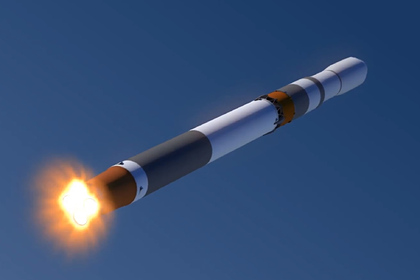The situation around the planned frequency of launches of the Soyuz-5 medium rocket created by the Progress Rocket and Space Center (RCC) and the Rocket and Space Corporation (RSC) Energia remains uncertain, [...] Progress CEO Dmitry Baranov told Russian Space.
"It's too early to talk about it now. We have an order for three missiles that will be flight tested on schedule — in 2023,2024 and 2025. Now the whole situation is "cooking", and no one will answer your question, " the head said.
The CEO noted that " the competitive advantages of the carrier are provided, among other things, by the volume of orders." "If there is an order for one missile, this is one thing, and if it is for five or seven, then this already significantly changes the situation," he said.
According to him, "it is necessary to determine which payloads can be launched by this machine, that is, to estimate the market volume." "It is also necessary to analyze how much it costs to launch a carrier of this class in the world. It is important to carry out work at the enterprise, so that the economy of the project develops, " Baranov said.
The CEO noted the existence of potential competition with foreign customers "not only in economic terms
the field, but also in politics."
In July 2020, the former general director and former designer of the Khrunichev Center, Vladimir Nesterov, who worked on the Angara family of missiles, said that the Soyuz-5 carrier being created by the Progress RCC was not needed.
In the same month, RIA Novosti recalled that the Soyuz-5 (Irtysh) is planned to be launched at Baikonur from the Nazarbayev Start launch complex, which was named after the first President of Kazakhstan, Nursultan Nazarbayev, on the initiative of Russian President Vladimir Putin.
As part of the Baiterek project, it is planned to launch Soyuz-5 from a converted launch pad for the Ukrainian Zenit-3SLB carrier at Baikonur. In the joint Russian-Kazakh project, Moscow is responsible for the creation of the carrier, and Nur-Sultan finances the work on the launch infrastructure. Flight tests of the Soyuz-5 are scheduled for the first half of this decade. The carrier is a two-stage medium rocket. The launch mass of the carrier is about 530 tons, the length is 61.87 meters, the diameter is 4.1 meters, the first stage engine is RD171MV, the second stage engine is RD0124MS. Fuel components: the oxidizer is liquid oxygen, the fuel is naphthyl. The mass of the payload being launched into low-Earth orbit from the Baikonur cosmodrome is about 18 tons.
Ivan Potapov


